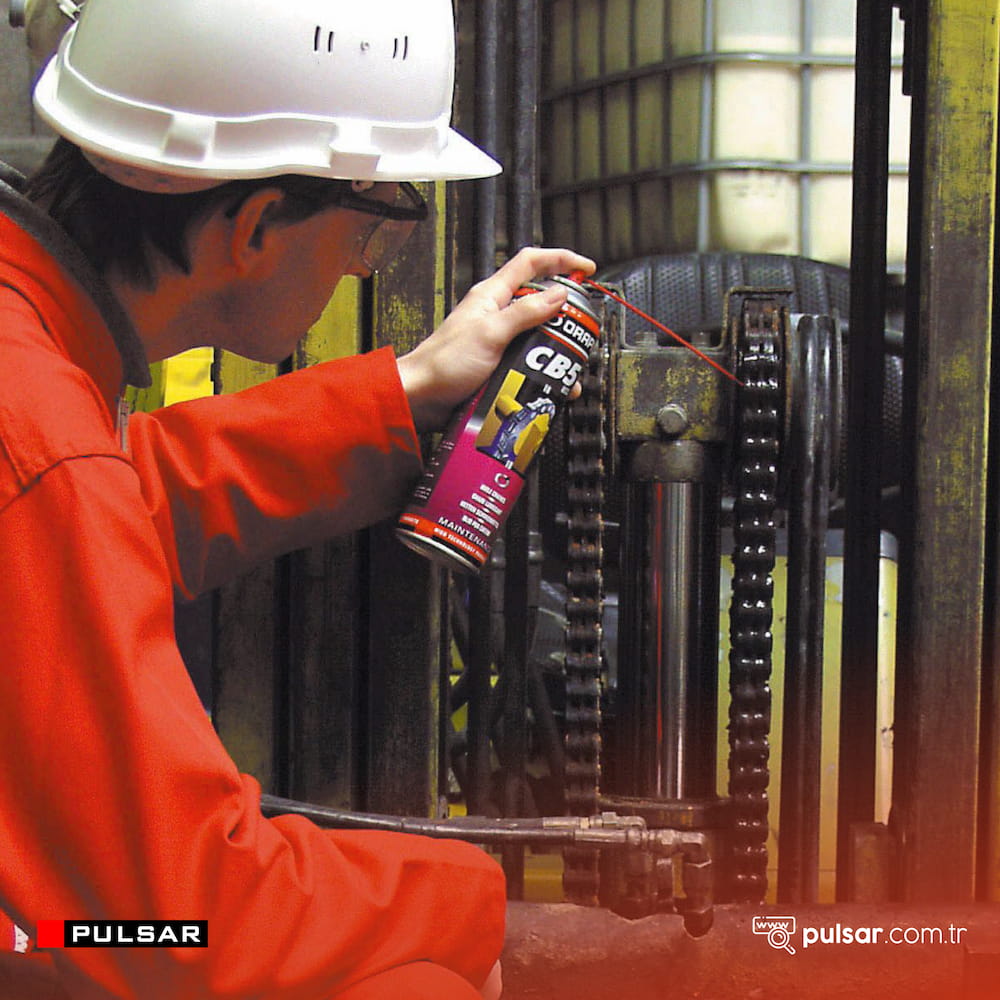What is Lubricant?
Friction between the contact surfaces of the two machine elements that are in contact and in motion, and accordingly, the temperature rise and wear and energy loss between the elements occur. In today’s industry, energy losses are seen in every machine in every field. The expectation of 100% yield has always been impossible. In some studies conducted by various organizations in the world, it has been revealed that one third of the energy produced is spent at the end of friction. In addition, it has been determined as a result of similar studies that the abrasions on the machine functional surfaces cause enormous economic losses. In order to minimize the energy loss experienced, lubricants are used to reduce or completely eliminate the contact surfaces, and this is critical.
Purpose of Using Lubricant
The main functions of a lubricant are:
- Reduce friction
- Anti-wear
- Protecting equipment from corrosion
- Lowering the temperature
- Contamination prevention
- To provide a fluid seal.
- Easy transmit power
Reducing friction is the primary purpose of lubrication, but this process has many other benefits as well. Lubricants also help prevent corrosion by protecting the surface from water and other corrosive substances. They also play an important role in controlling contamination in systems. Lubricating fluids also aid temperature control by absorbing heat from surfaces and transferring it to a lower temperature point where it can be dissipated.
What is Lubricant Spray?
Lubricant Spray is a multi-purpose spray formulated to help reduce friction between moving surfaces in contact and to reduce the heat generated by the movement of surfaces. In this way, wear reduction and control can be achieved. In addition to minimizing lost energies, lubricants also provide benefits such as dissipating heat caused by friction, cleaning surfaces and prolonging the life of the system.
What are the Lubricant Types?
Lubricants can be classified as solid, liquid, semi-solid and gas lubricants according to their physical states.
1. Solid Lubricants
Solid lubricants can be used alone or as additives to oils or greases. The most commonly used solid lubricants are graphite and molybdenum disulfide.
Solid lubricants provide lubricating properties by forming a layer with low shear stress and high tensile strength on the applied surfaces. Graphite and molybdenum disulfide used as lubricants must be very clean or they will erode surfaces violently.

2. Liquid Lubricants (Oils)
liquid lubricants; We can divide them into three groups: organic (animal and vegetable), mineral (mineral) and synthetic oils.
- Organic (animal and vegetable) Oils; They have good lubricating properties but have a short life. In addition, they are used as foodstuffs, so their prices are high.
- Mineral (mineral) Oils; They can easily enter and exit between the friction surfaces, carry the heat out, and can be easily stored. For these reasons, they are used much more frequently than other oils. Mineral oils are obtained by distillation from petroleum. On the basis of petroleum, they can be grouped among themselves as paraffin-based mineral oils, naphthene-based mineral oils and mixed-based mineral oils. They are refined after distillation to add higher properties to oils. Thus, refined oils with higher lubricating properties are obtained.
- Synthetic Oils; They are artificial oils, usually made from chemicals. They are named according to the material from which they are manufactured. For example; such as dibasic acid ester, phosphate ester, silicone, silicate ester oils
You can review our previously published content “The Production and Function of Mineral Oils” related to the subject.
3. Semi-Solid Lubricants (Greases)
Greases are semi-solid lubricants consisting of liquid oils with a thickening agent. In addition to mineral soaps such as aluminum, barium, calcium, lithium, sodium, bentonite, mica or organic-based non-soap materials can also be used as thickening agents. For example, according to the thickener; There are greases such as aluminum soap, calcium soap, lithium soap. It is generally used in low or medium speed and load systems that operate in the open and have long lubrication times.
4. Gas Lubricants
Gaseous lubricants are used in high speed and low load fluid friction systems. Since the viscosity of the gases is low, friction and temperature increase in the system are low. However, their load carrying capacity is low. Recently, sulfur hexafluoride, liquid nitrogen, steam and organic steam have been used alongside air, hydrogen and nitrogen gas lubricants. Thus, this lubrication method, which is used in ultracentrifuges, gyroscopes, and electric motors, has also started to be used in gas turbines, jet engines, rockets, and nuclear reactors.
Usage Areas of Lubricants
Lubrication is vital in mechanical systems to maintain the performance of the system and to ensure that it operates without failure. Especially in industrial machinery and equipment, lubrication is one of the most important factors that can directly affect machine performance and precision.
Pistons, slides, shafts, bearings, etc. used in machines. Since the systems operate at high speeds and under heavy pressure, they constantly need lubrication. Lift, transmission, oven and conveyor chains operating in some industries need lubrication to perform well. In addition, lubricants provide cleaning and protection with high penetration.
As PULSAR KIMYA, we have been successfully representing the ORAPI brand in Turkey since 1997. Our product range includes various lubricant sprays. You can access our products related to the subject or you can reach us via the contact page address.

Kaynakça:
http://www.garipgenc.com/wp-content/uploads/2021/01/MRM3005_Ders_14_Tribololi.pdf
https://web.itu.edu.tr/temizv/Sunular/Triboloji.pdf
http://dspace.trakya.edu.tr:8080/xmlui/bitstream/handle/trakya/2321/0107395.pdf?sequence=1&isAllowed=y

